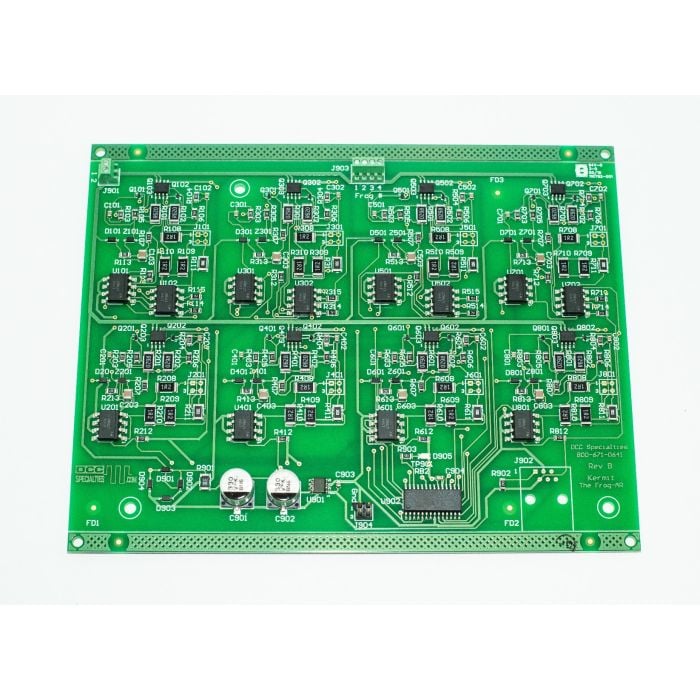 January 19 2023
January 19 2023 PSXX & Frog-AR Limit Current & Save Lives
Well, maybe they don't save lives but they do save your decoders and locomotives.
Hey Guys, Larry Puckett raises in his DCC Guy YouTube Video # 279 (“The Inconvenient Truth About Autoreversers, Circuit Breakers, and Frog Juicers”) the potential decoder damages arising from “short activated” devices, including the Frog-AR. Many of the commenters to that YouTube video noted decoder problems using such devices. So, it seems to me to be more than a trivial issue.
As to the DCC Specialties Frog-AR, I have some recollection – but can’t find any “documentation” to such effect – that Larry Maier designed the Frog-AR to reduce such damaging of decoders. However, although the Frog-AR manual notes the limitation of the current that flows to the frogs to 1 amp (in the default - and generally suitable - mode) “. . . significantly reduces war and tear of engine wheels and pickups”, it does not say anything re protecting decoders. Larry Puckett does indicate in his YouTube #279 that using the DCC Specialties PSXX circuit breaker – which I do – does help reduce the potential decoder damage problem.
I find the Frog-AR polarity reversing devices very useful, and would like to avoid abandoning use of them - and I will continue to use if decoder risk is (or can be made) low. Thanks and best.........Tom H.
Hey Tom, with most frog polarity reversing devices, when the engine wheel hits the wrong polarity frog, the frog is shorted to a point rail by the engine pickups. Since this is the lowest resistance point on the layout, all of the booster current flows through the short causing the track voltage on the entire layout to drop to close to zero volts. The frog polarity then reverses, releases the short, terminating the high current flow and allowing the track voltage to return to normal.
Two bad things happen during the cycle:
- During the short, the full current capability of the booster is flowing through your rather fragile wheel contacts. This current will be much higher than the continuous rated current of the booster. It can be as high as 27 or more amperes. Since damage is proportional to the square of the current, we can get some pretty big numbers this way.
- The second thing that happens is the current spike charges any inductance on the layout (wiring, track, etc.). This energy is released when the frog reverses polarity and appears as a voltage spike on the layout. This processes is EXACTLY the way the ignition on your lawnmower works to generate a high voltage spark. Again, the inductive energy is proportional to the inductance and the square of the current.
So, yes, the Frog-AR does limit the current that flows through the short before the frog polarity reverses. Since it does not take all the booster current, in general, the track voltage will remain more or less the same during the short. This helps your equipment two ways. First, the energy dissipated in your engine contacts is much lower and second, the energy stored in any layout inductance is much lower, hence a much lower voltage spike. Since both of these issues are related to the square of the current, the savings is significant. A good 5 amp booster can output 27 amperes into a short. Limiting the frog current to 1 ampere (the Frog-AR default) results in a fault stress that is 0.15% of an unlimited fault. If you have an 8 amp booster that really does not allow more than 8 amperes, you are at 1.6% of the unlimited threat. Even with a 3 amp booster, you are still at only 11% of the unlimited threat.
As you can see, limiting the current in a fault (which both the PSXX and Frog-AR are designed to do) significantly reduces your chances of damaging your equipment particularly if you are repeatedly pounding it every time you use a turnout with the wrong frog polarity.
I hope this clarifies how both the PSXX and Frog-AR function in terms of protecting our relatively deleicate models and DCC decoders........Larry Maier

